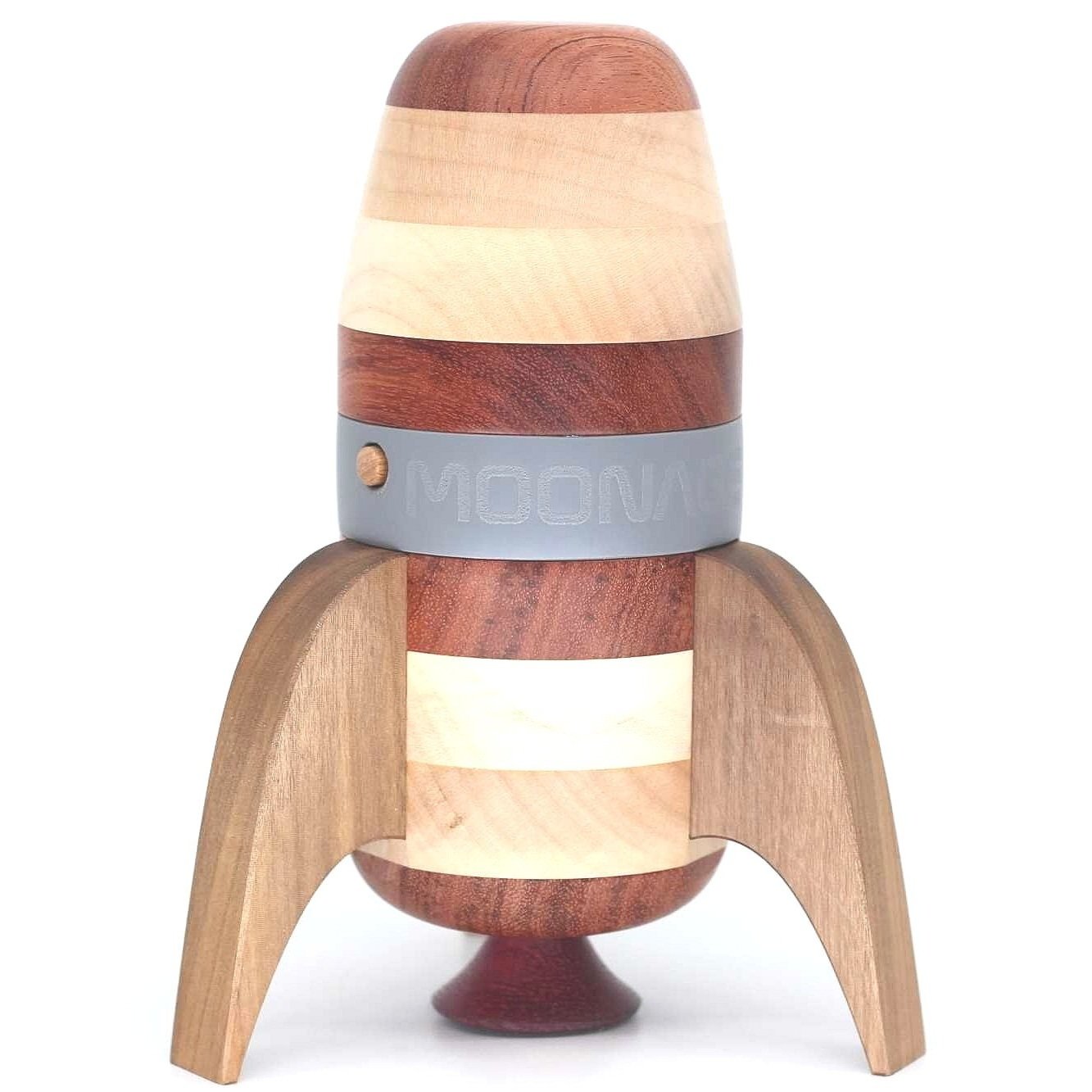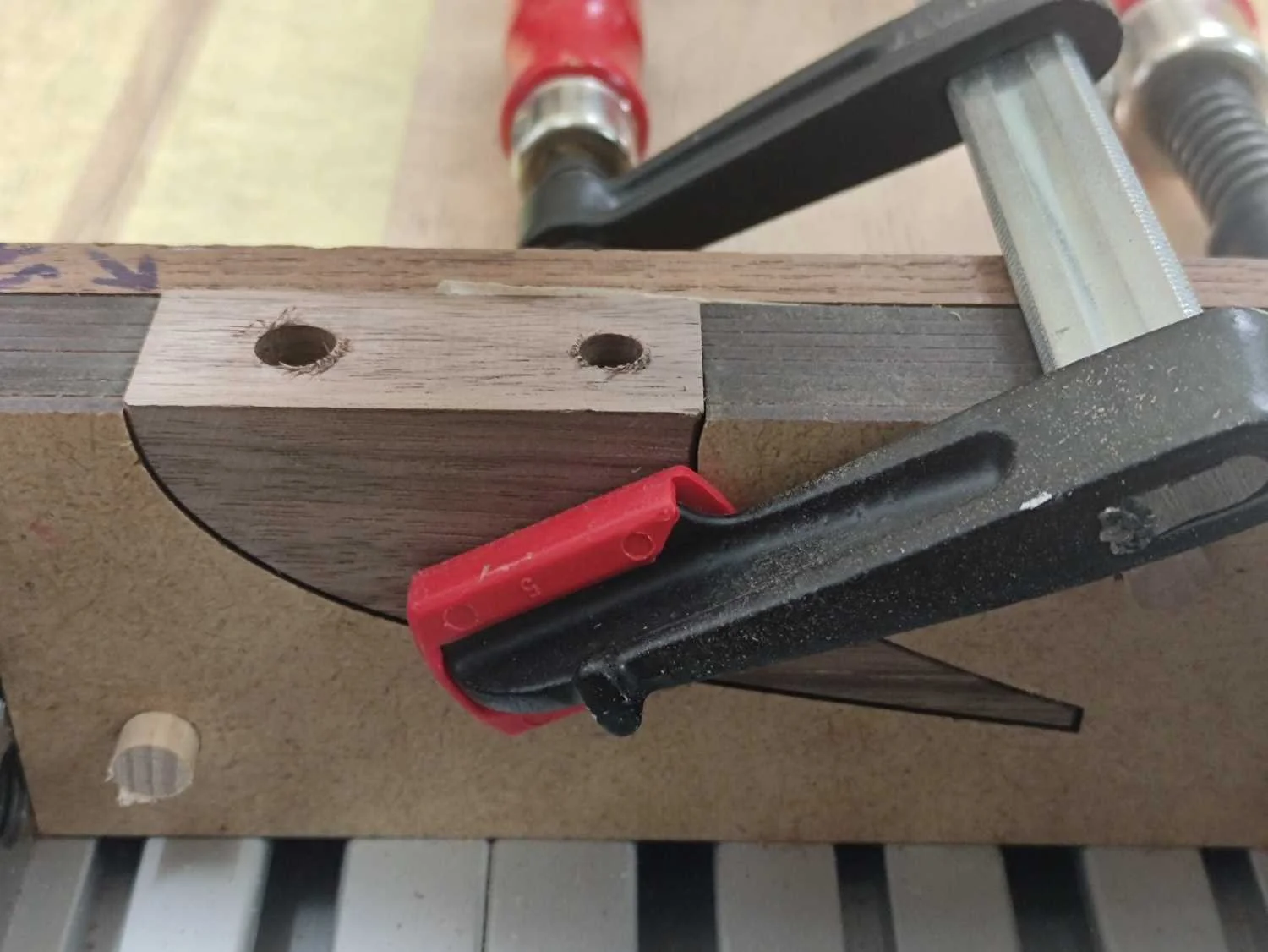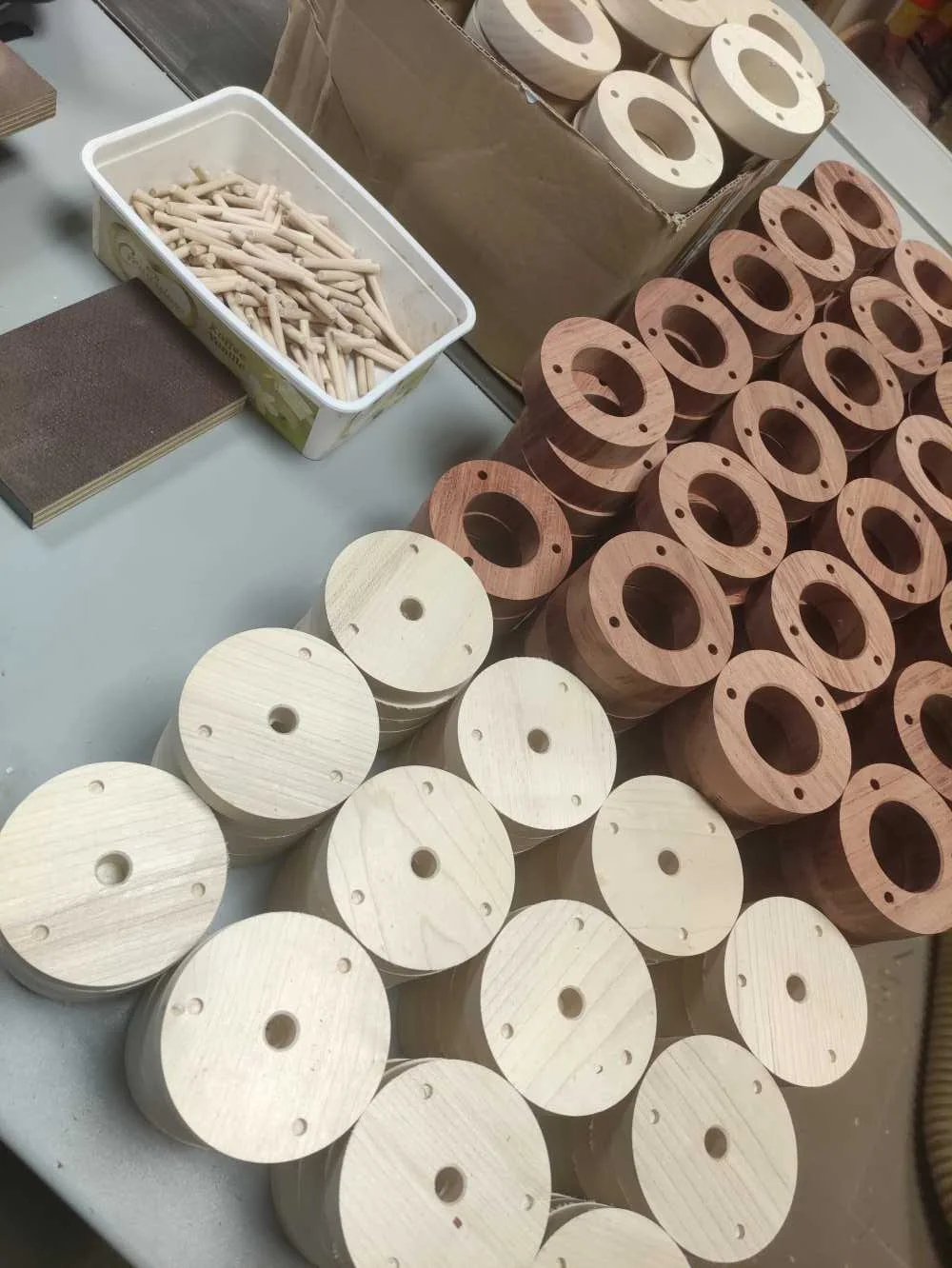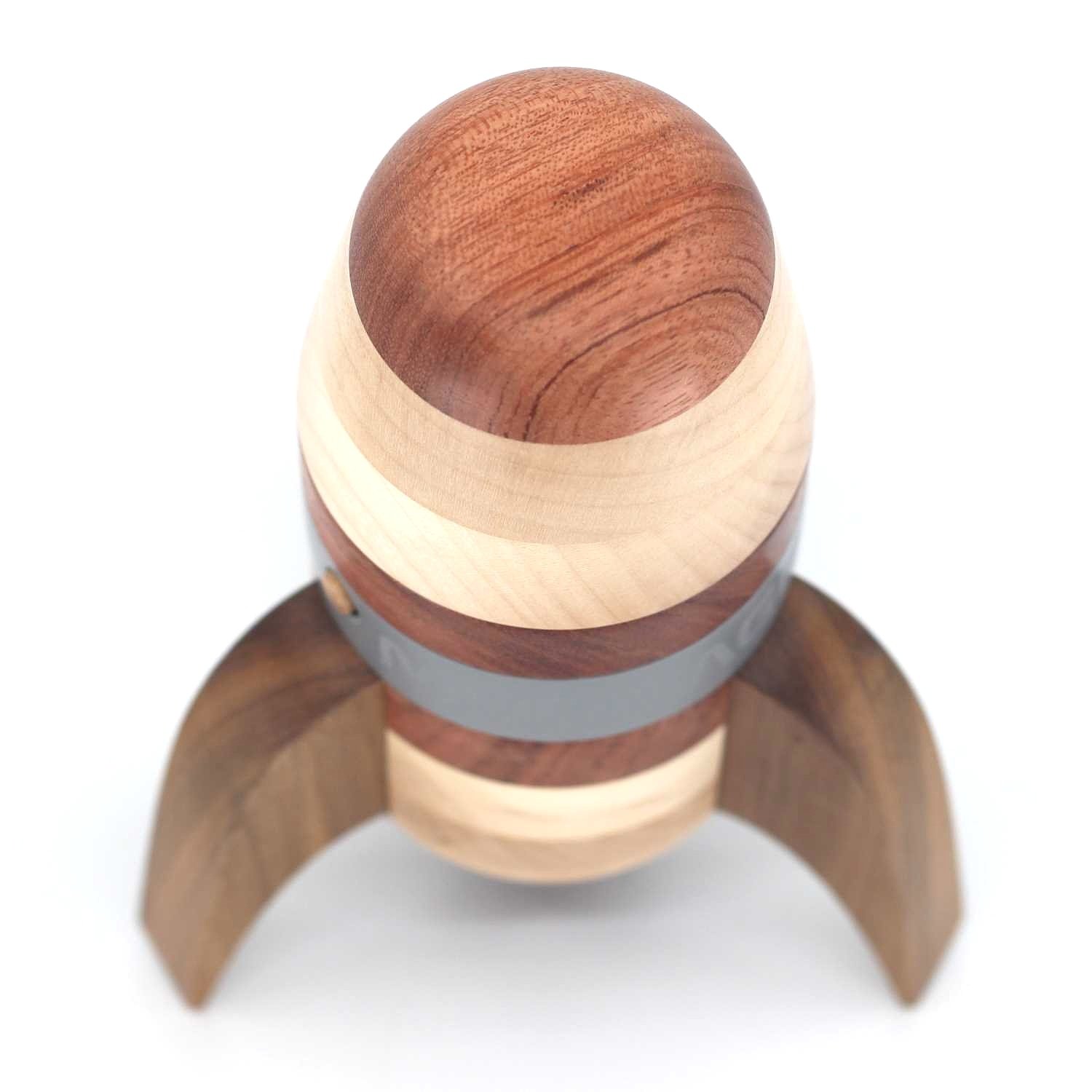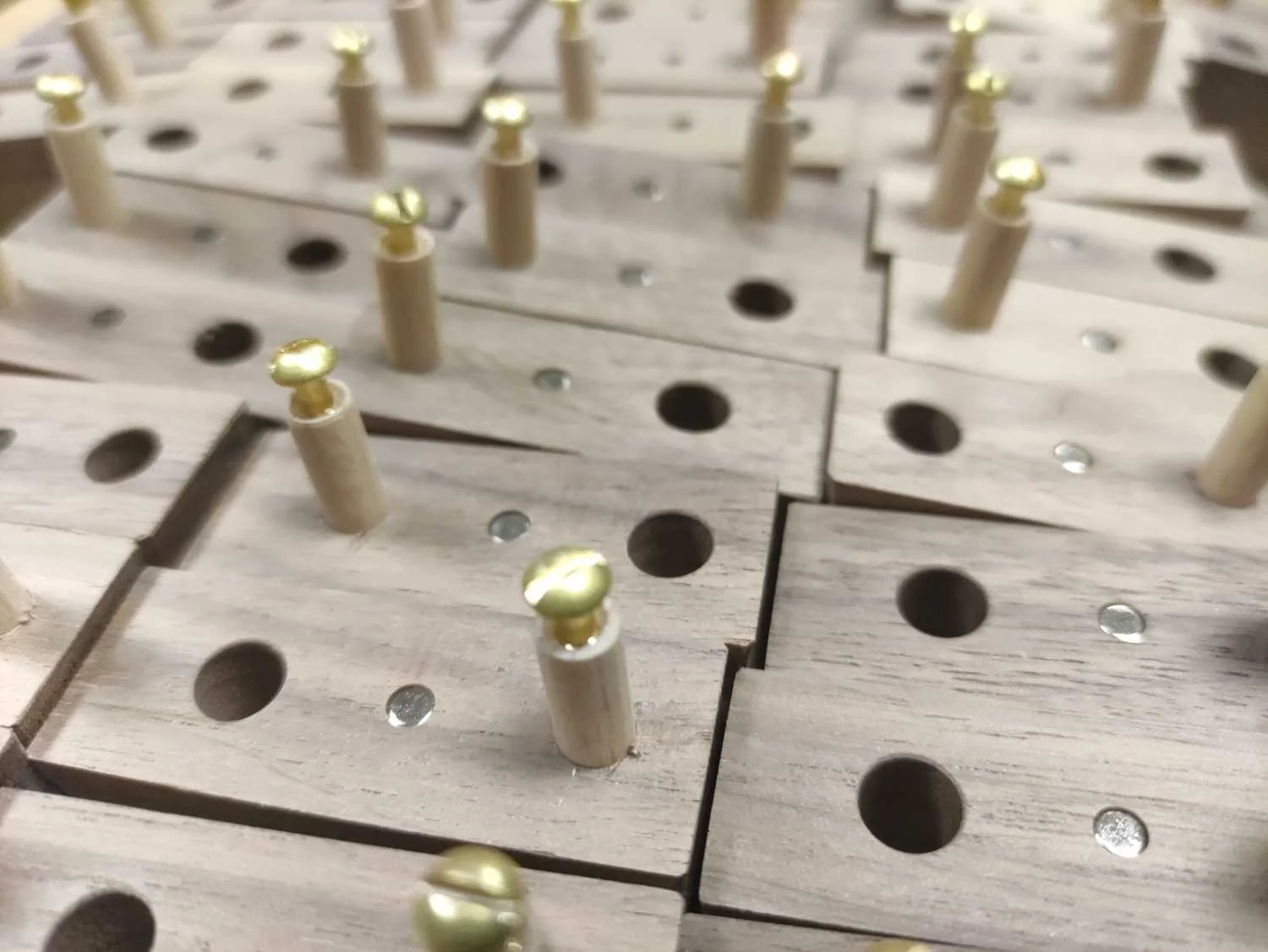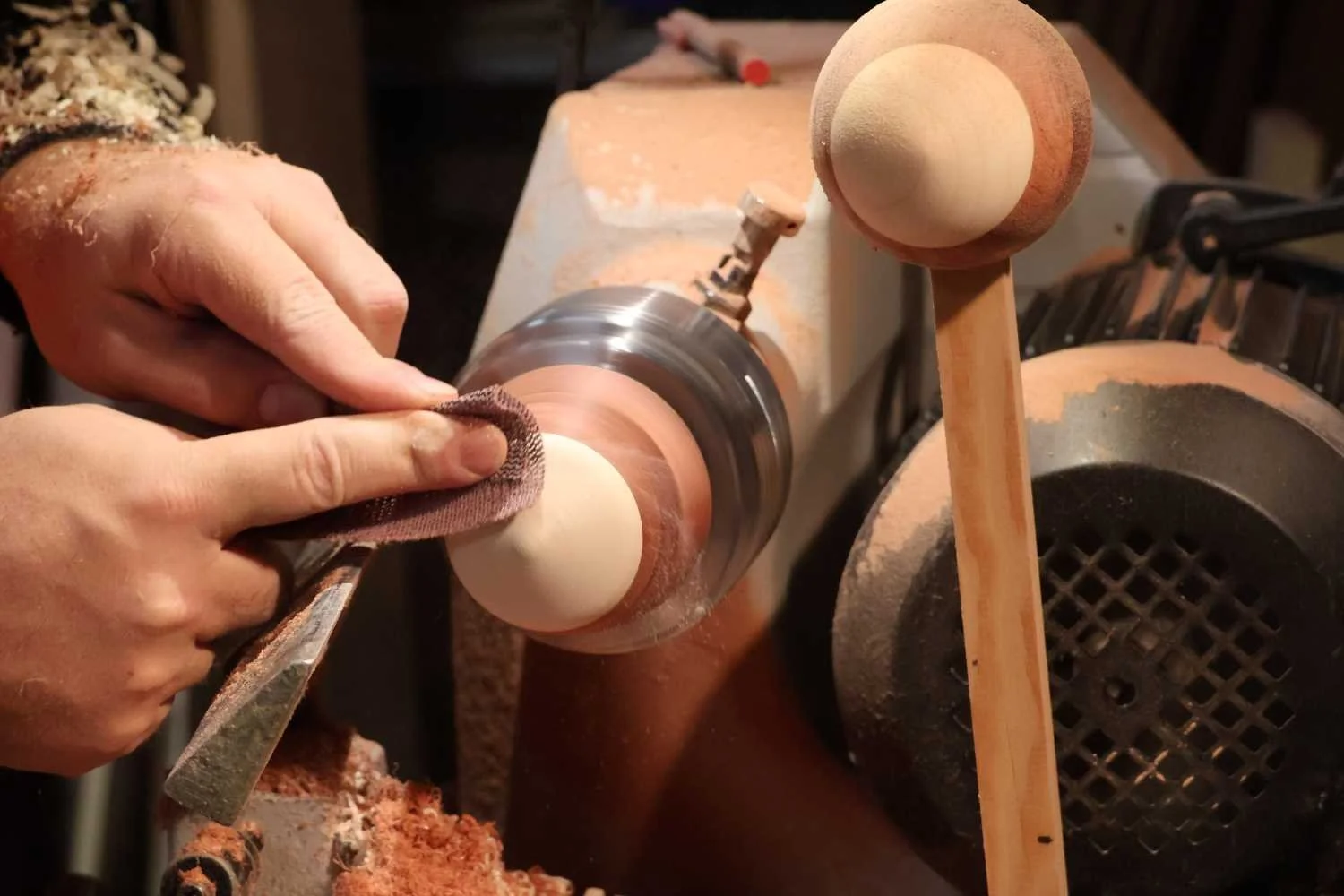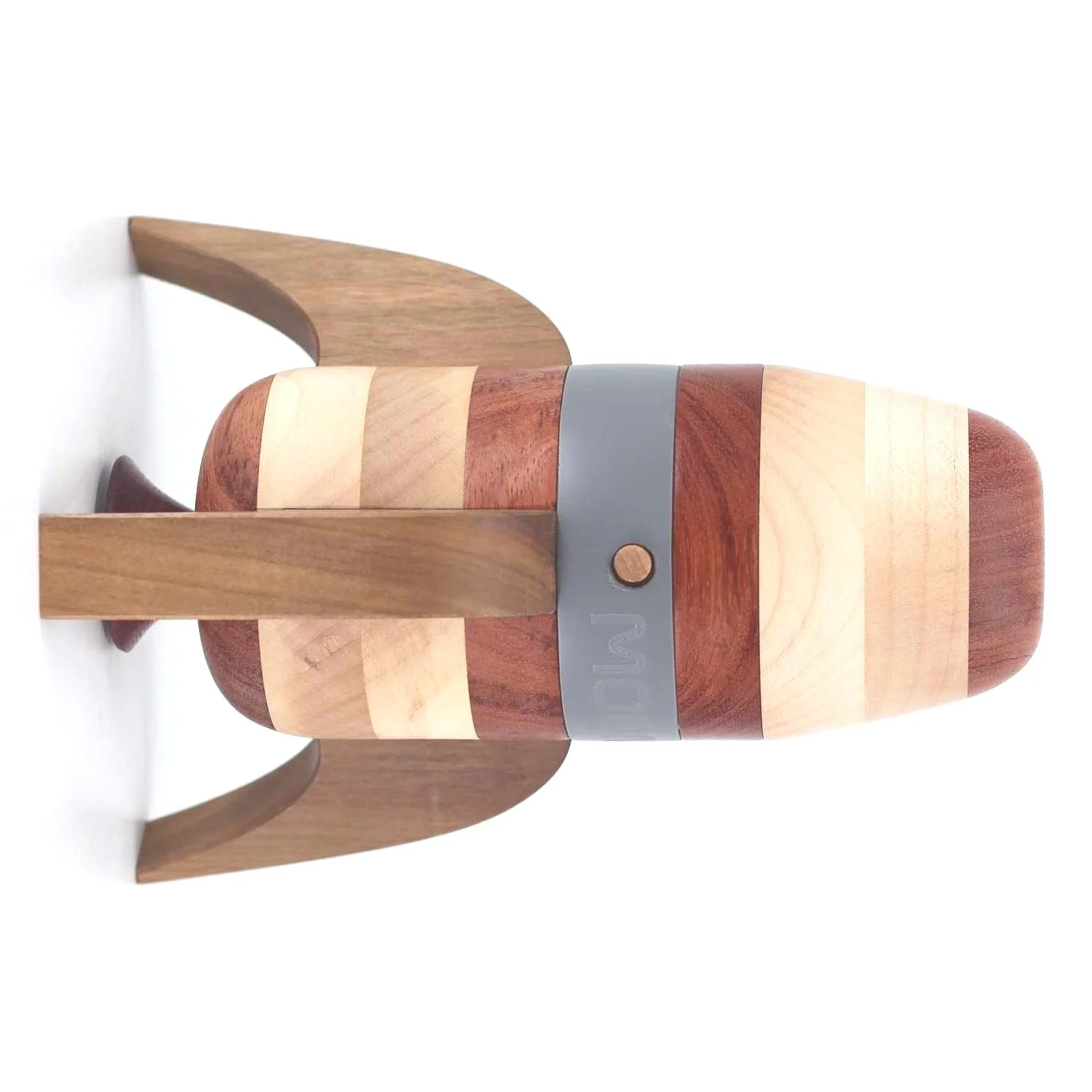Fly Me to the Moon
Moonage M5
Moonage M5 by Stephan Baumegger
Austrian puzzle maker Stephan Baumegger is having a blast. His complex interlocking puzzle designs are celebrated by enthusiasts the world over, but he has also created a few unusual, award winning designs over the years which incorporate cleverly hidden moves, delightfully unusual shapes, and unexpected materials. Any new entry of his into the annual International Puzzle Design Competition is cause for celebration, and I’m particularly fond of his most recent, which he created for last year’s International Puzzle Party (IPP) held right here in Space City - Houston, Texas.
over the moon
In 1969, Apollo 11 became the first manned space ship to successfully land on the moon, with a crew of 3 astronauts (Neil Armstrong, Michael Collins and Edwin “Buzz” Aldrin). While Cape Canaveral served as the launch pad, Space Center Houston was the command center, and dealt with any puzzle “problems” that came up during the space missions.
have a blast
Naturally Houston would be an ideal place for not only an international puzzle party, but an interstellar one! Stephan Baumegger certainly thought so, and created a moon lander to commemorate the “moonage” – not 4.5 billion years, but that period of time from 1969 to 1972 during which many missions to the moon occurred. Stephan recounts the tale of his moon shot.
courtesy of Stephan Baumegger
“Three years ago, I had the Idea to build an SD [sequential discovery puzzle] in a shape of a rocket. In that time, I had no 4th axis on my CNC. So, I built the prototype on my lathe. That was very tricky to get it accurate so that it all fit together perfectly, and not a way to do it as a series. I also had only the idea for the first stage, so the project came to a long rest.
courtesy of Stephan Baumegger
When I heard that the IPP will be in Houston, it was clear for me to get that Rocket project further and hopefully to a final shape with some more steps. I refreshed my knowledge about the Apollo moon landing and tried to find possibilities to get as much as possible into my rocket. So, it was clear, there should be some ‘stages’, also a Spaceman is needed, a Flag for the Moon and a Moon Lander would be great.
courtesy of Stephan Baumegger
To do all that stuff, I had to implement my 4th axis to the CNC. This was/is a project on its own. For my CNC there was no update available to do so. In this case, I had to do a lot on my own and with help from a friend. That was a long and challenging process.”
courtesy of Stephan Baumegger
Stephan relates how the second part of the puzzle’s name, “M5” came about, from a mistake he made during production that was so painful it deserved to be commemorated. “The name should be an homage to the time when mankind was able to land on the moon – so ‘Moonage’.
courtesy of Stephan Baumegger
'M5’ is a personal note. My CAD program didn’t totally support my 4th axis. So I had to learn to adapt the g-code files on my own. In this situation, I once forgot to write ‘M5’ into the code, what means spindle stop. I have an automatic tool changer, but if you want to change the tool, the spindle should not run.
you’ll love it to the moon and back
So, you can imagine what happened, I ran the spinning spindle into my tool changer and my spindle didn’t like to open the tool during spinning at all. It was a total crash and my spindle blocked immediately. I had to check a replacement and nearly everything that could go wrong went wrong. At this point, I thought I will never get it done in time, and all because I forgot ‘M5’.”
courtesy of Stephan Baumegger
Stephan is a big fan of automation for a big production. He used his CNC to create nearly all of the parts on and inside the rocket, and for the color patterns. He created parts in layers to allow the CNC to get deeply inside for various mechanisms, and notes how precisely he had to line up internal joints for gluing, which was achievable thanks to the CNC.
courtesy of Stephan Baumegger
He made a lot of changes in order to get the perfect fitting. He spent a long time as well searching for the perfectly cute Spaceman for the finale. He mentions wishing he could have made the rocket a little bit smaller, but certain mechanisms required enough “space”, which seems fitting, after all.
courtesy of Stephan Baumegger
Moonage M5 is a beautiful puzzle, expertly crafted from colorful hardwoods in an adorable rocket shape. It is also a delightful puzzle, with lots to discover and many fun mechanisms to conquer while making the journey to the multiple goals and finale. Like the real Apollo 11 mission, it launches in stages, and Stephan has included this concept into his puzzling retelling of the story. Stephan continued his streak again by earning a Top 10 award for Moonage M5 at the International Design Competition.
hang the moon
“There are over 60 parts this puzzle is made out, and a lot of different materials. Most is wood, but I also needed acyl, 3d printed part, magnets, springs, screws, tools and other metal parts. I used Maple, Burbinga, Amarant (Purpleheart) and Walnut for the 66 copies. I learned so much, I couldn’t imagine in the beginning. The most I learned is how to handle my 4th axis, how to replace a spindle, how to check out wiring, reading Circuit diagram, writing G code and stay calm! My big goal was to build an SD with a story that was already written in the past. If you know the movements of the Moon lander at the Apollo mission, it might help you.”
Moonwalk by Joe Gilmore
Here’s a toast to the moon age, a celebration of humankind’s achievements in science and a time when our dreams and our ambition walked together on the surface of the moon. Like Stephan Baumegger, who created this beautifully puzzling homage to that time and accomplishment, there were many others who were moved by the event. Joe Gilmore was the head barman at the iconic American Bar at the Savoy Hotel in London in 1969, when he, along with the whole world, was captivated by the moon landing zeitgeist. Joe joined the Savoy when he was just 18, and was the last direct protégé of Harry Craddock, the most famous head barman there.
mixing with Michael Jackson
Joe’s Moon Walk cocktail was a refreshing champagne sparkler, with grapefruit bitters (or juice) and orange liqueur. Historically, Joe sent a flask of his creation to NASA, and it was the first thing that the crew drank after they got back to Earth. Neil Armstrong even sent Joe a letter, care of the Savoy hotel. Joe never made it to the moon, but he lived to shake his famous cocktail at the bar until the age of 90, and lived to be 93, when he left for the stars. Cheers!
this pair requires some degree of lunacy
Moonwalk by Joe Gilmore
30 ml Grand Marnier
2 dashes orange flower water
3 dashes grapefruit bitters
1 sugar lump
Champagne
Build cocktail in a flute and garnish with a citrus peel
explore more:

